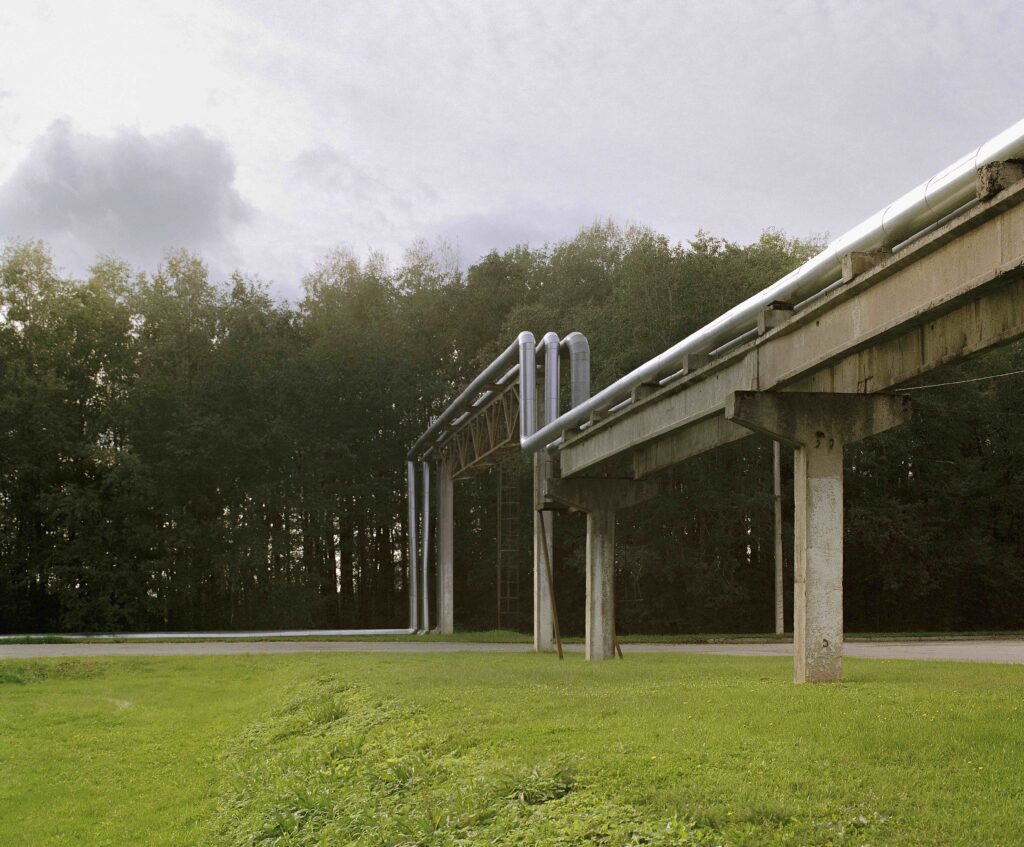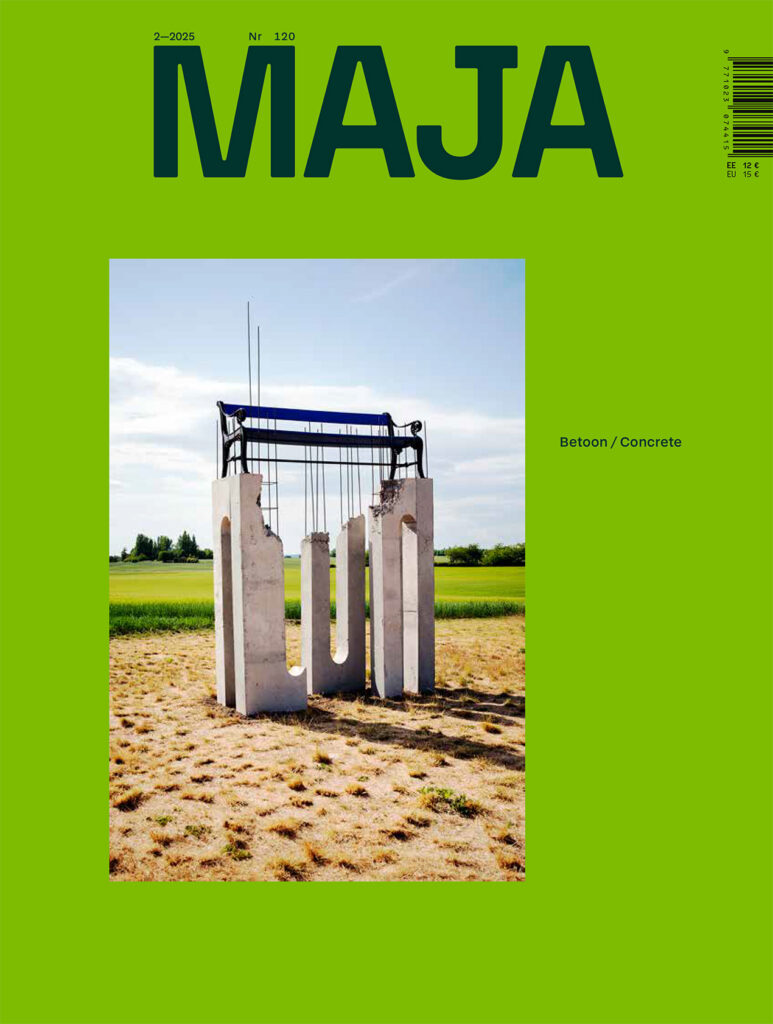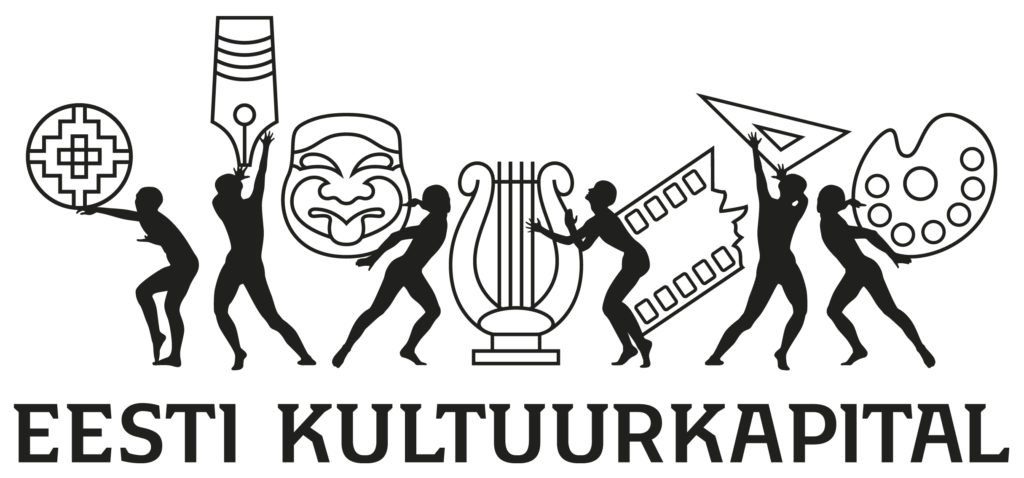Humankind is transforming the planet into a vast infrastructural project serving its economic system. Landscape architect Hannes Aava explores how this development is reflected in critical theory and discusses what must be done to prevent the metabolism of humankind from becoming a metastasis.
News reports of cables and pipelines damaged or destroyed by explosions or ship anchors in the depths of the Baltic Sea, a 500 MW energy battery planned 750 metres underneath the limestone cliff in Paldiski, rapidly expanding solar parks, ports, and airports, and the public’s excitement over the opening of new dual carriageways all illustrate that infrastructure and the natural environment it occupies are not only in the spotlight and politically charged but also fundamentally define humanity’s relationship with the environment.
Technical landscapes
Infrastructure, along with other built environments and structures inserted into natural spaces (such as into the Baltic Sea), forms the circulatory system of humanity’s economic ‘superorganism’, engulfing landscapes both above and below ground. In critical theory, this phenomenon is referred to as a ‘technical land’, encompassing spaces defined by human economic-political systems where the activities of ordinary people and other species are restricted and which often serve a singular, utilitarian function. Peter Galison, one of the early proponents of the term, aptly described it thus: ‘But we see the land, in some irreducible way, as a substrate, as external to us as space and time were to Newton and his followers. History, in this account, is about the use of land – it is borrowed, temporary, and reversible—the way a cast of actors might take over a theatre for a Shakespearian drama one week, and a political party might rent it for a rally the next’.1
The birth and growth of technologically advanced societies have largely depended on the unrestrained and unsustainable exploitation of human and natural resources, in which technical land plays a pivotal role. In Estonia, for example, opposition to phosphorite mining was central to the development of national-political self-awareness in the 1980s. However, the mythical narrative of the so-called ‘forest people’ that emerged in this process seems somewhat dubious in hindsight. It appears that the issue was not so much about preventing the destruction of landscapes, but more about political agency—in other words, about under whose political aegis it would be done, as phosphorite mining is once again on the agenda in Estonia.
It appears that the issue was not so much about preventing the destruction of landscapes, but more about political agency—in other words, about under whose political aegis it would be done, as phosphorite mining is once again on the agenda in Estonia.
In late capitalist discourse, much effort has been made to obscure the social and material costs of one’s actions by transforming spatial issues into kinetic ones through language. For example, ports with infrastructure that devastates coasts, delta wetlands, and river ecosystems while displacing local inhabitants, are described as ‘hotspots’ for capital flows, sustaining a vast machine in the manner of blood vessels. Electric cars are presented as a ‘cleaner’ alternative, yet their increased weight exacerbates the pollution of oceans and rivers, primarily caused by rubber particles from tires. The advancing digital infrastructure has been portrayed in recent decades as an ethereal and free-floating ‘cloud’. This helps to obscure not only its ecological and social footprint but also the labour involved, using abstract concepts to seemingly remove it from the physical reality.
Peter Galison also draws attention to the temporal dimension of technical landscapes and human manipulation of processes that far exceed human timescales. ‘They are intensely local lands, meaning this soil, this evaporation pond, this underground storage tank exist right now. /…/ But technical lands also link us to a past and future through planetary and evolutionary time, leading to spaces that range far more extensively than we reckoned when we built our systems of airports, weapons factories, refineries, plastic production facilities, and toxic legacy sites’.2 For instance, some nuclear waste from the arms industry has a half-life longer than the age of the human species.
Illusions of a clean and safe future economy
The usual aesthetic obscenity of industrial landscapes has, over time, also left its mark on their creators. Modern infrastructure, particularly in Western countries, is characterised by attempts to make it visually clean, sublimating the notion of a ‘clean and green’ economy into aesthetic language. Much has been said about the real, profoundly dirty global footprint of Apple products, one of the pioneers of this aesthetic. It is no coincidence that the visualisations of the proposed nuclear power plant in Estonia resemble the sleek, visually clean design of an iPhone or yet another anonymous transport hub by the likes of Studio Zaha Hadid.
As architecture historians Beatriz Colomina and Mark Wigley have shown, the pursuit of smoothness, minimalism, and visual purity quickly became the main design goal in modernism,3 alluding figuratively to the ambitions of the infrastructure-producing system in the background. Minimalist server farms and logistics centres now lining the outskirts of cities appear relatively ‘clean’ compared to the factories and steel mills of the previous century. Jay Cephas suggests that the accompanying metaphor of the cloud aims to dematerialise not only the physicality of technical networks but also the labour that sustains them.4
The problem, of course, is that this is merely a cosmetic change—new industries, including artificial intelligence, are simply further components of humanity’s planetary metabolism, eagerly queuing up for their share of copper, lithium, cobalt, steel, concrete, glass, and more from extraction-based industries. It is not that there is less mining, production, or consumption; instead, the dirtiest and most polluting parts of the industry have simply been relocated to countries and regions where pollution is cheaper or where locals are less able to protect their landscapes than the ‘NIMBY’ civil societies in Western countries.
Here, it is worth recalling the Jevons Paradox from economic theory, which suggests that any increase in energy efficiency does not lead to overall saving, but rather to increased consumption of the resources freed by efficiency gains, either in the same field or elsewhere. This sad realisation from the early years of the industrial age continues to be proven true, most recently in the case of LED lights, whose nearly tenfold increase in energy efficiency has led to extreme growth in consumption (and light pollution), far exceeding the energy savings gained.

Planetary urbanisation
According to the UN Environment Programme, cities consume 75% of the energy used by humanity. This fact alone seems to support the view of urban ecosystem researchers Luis Inostroza and Harald Zepp that activities occurring outside the official boundaries of cities, including the infrastructure built to serve them, are broadly speaking part of the planetary urbanisation process.5
This broader development has been framed as the metabolism of cities, a notion that, according to architect-researcher Daniel Ibañez, is based on Karl Marx’s concept of the metabolic rift.6 Marx was one of the first to describe the larger dynamics of the material flows in which materials, especially essential elements from the soil, are transferred unidirectionally from rural areas to cities. In his view, this created a rift between the metabolisms of urban and rural areas, which, according to Ibañez, has only worsened over time, leading to ecological crises on a global scale.
Leaving aside the primary cause—the ever-increasing demand for energy—Ibañez calls upon spatial designers to think critically about what can be done in their field to address this situation. He sees metabolism as a useful lens through which to view this complex, ecology-like system, along with the power structures that govern it. Designers and spatial creators must be aware of this and engage with power and politics to try to mend the rifts caused by urbanisation processes and make the entire system more efficient.
In Ibañez’s view, the primary task of designers is to identify opportunities for creating positive feedback loops of energy. In architecture, this might involve using sustainably sourced wood, which, under certain conditions, can accelerate forest growth. This would capture carbon and create a positive feedback loop of energy. Recycling also creates such an energy loop, which Ibañez likens to autophagy, a concept from cellular biology describing how a starving cell reallocates nutrients from less critical processes to essential ones—a process utilised by fasting individuals to cleanse their bodies, and by smart cities to clean their urban space and save energy.
When discussing infrastructure, it seems imperative to think creatively about the material, chemical, and physical functions of a city, treating space as the aforementioned cell in which certain less important bits should sometimes be reconsidered. In the old paradigm, declaring something unimportant would amount to destining it for demolition, but in order to create a positive feedback loop, all materials should be reused within the city. Material passports, already gaining popularity in several countries, and Amaya Hernandez’s idea of a material broker for cities seem like fundamental necessities for a sustainability-driven society. These evoke memories of a time when recycling was truly en vogue: in 19th-century France, around 100,000 people worked in the field of chiffonage, collecting and repurposing discarded materials such as bones, rags, and metal for reuse and sale.
Much could also be achieved by curbing the blind faith in the all-encompassing power of new technology and engineering, which has made us lose much of our wisdom over time.
Much could also be achieved by curbing the blind faith in the all-encompassing power of new technology and engineering, which has made us lose much of our wisdom over time. In her influential work, Lo-TEK: Design by Radical Indigenism,8 landscape designer Julia Watson presents dozens of indigenous technologies that utilise natural processes and materials. These include the enormous ecological landscape systems that purify water for Kolkata’s 14.5 million residents while simultaneously protecting the city from floods. Similarly, landscape architect Gary Strang has critically pointed out how, in many infrastructure decisions, wasteful and more complex mechanisms have gradually triumphed over simpler natural solutions, resulting in urban infrastructure becoming more technologically complex and hazardous than analogous nature-based processes would have been.9 The worst example is perhaps the wasteful use of our planet’s most valuable resource, water, in cities across the Global North (including Estonia).
It is difficult to dispute historian of religion Mircea Eliade’s assessment that the Neolithic transition from a nomadic lifestyle to an agricultural one, and the estrangement from understanding nature and holding it sacred, led to many of the planetary challenges that humanity faces today. According to Eliade, the transition to predominately technology-affected environments and the exponential acceleration of ecosystem degradation over the previous century has led to a spiritual crisis that can be mitigated only by a fundamental reconceptualisation of the reciprocal relations between man-made environments and natural processes.
It may seem unjust to criticise an individual cruising down a newly constructed dual carriageway with their private car for failing to consider their personal infrastructural impact or their indirect contribution to the decline in fertility rates and the degradation of water ecosystems; it may seem unjust to expect them to alter their lifestyle on the fly. If infrastructure is regarded as the bloodstream of the planetary system, addressing its health in a meaningful and sustainable manner can only be achieved through systemic and collective efforts.
HANNES AAVA is a landscape architect who recently completed his master’s studies at the University of Greenwich. His publishes articles on (urban) space and culture, and has a growing interest in systems thinking.
HEADER photo: Gregor Jürna
PUBLISHED: MAJA 3-2024 (117) with main topic Infrastructure
1 Peter Galison, ‘What Are Technical Lands?’, in Technical Lands: A Critical Primer, eds. Jeffrey S. Nesbit and Charles Waldheim (Jovis, 2023), p. 19.
2 Peter Galison, ‘What Are Technical Lands?’, in Technical Lands: A Critical Primer, eds. Jeffrey S. Nesbit and Charles Waldheim (Jovis, 2023).
3 Beatriz Colomina and Mark Wigley, Are We Human? Notes on an Archeology of Design (Lars Müller Publishers, 2016).
4 Jay Cephas, ‘The Landscapes of Logistics’, in Technical Lands: A Critical Primer, eds. Jeffrey S. Nesbit and Charles Waldheim (Jovis, 2023).
5 Luis Inostroza and Harald Zepp, ‘The metabolic urban network: Urbanisation as hierarchically ordered space of flows’, Cities 109 (2021).
6 Daniel Ibañez, ‘Metabolic by Design’, in The City as a System. Metabolic Design for New Urban Forms and Functions, eds. David Dooghe et al. (trancityxvaliz, 2023).
7 Amaya Hernandez, ‘Sisyphos and Portland Stone’, Maja 115 (Winter 2024).
8 Julia Watson, Lo-TEK: Design by Radical Indigenism (Taschen, 2019).
9 Gary Strang, ‘Infrastructure as Landscape’, Theory in Landscape Architecture, ed. Simon Swaffield (University of Pennsylvania Press, 1996).





